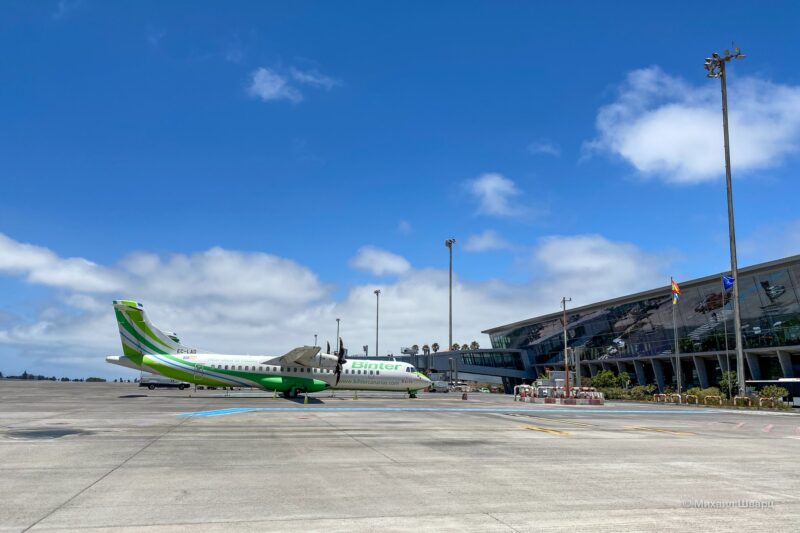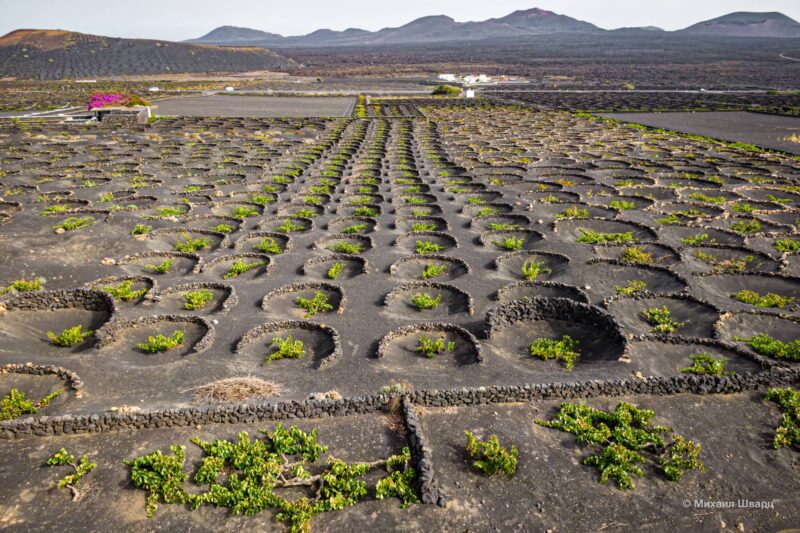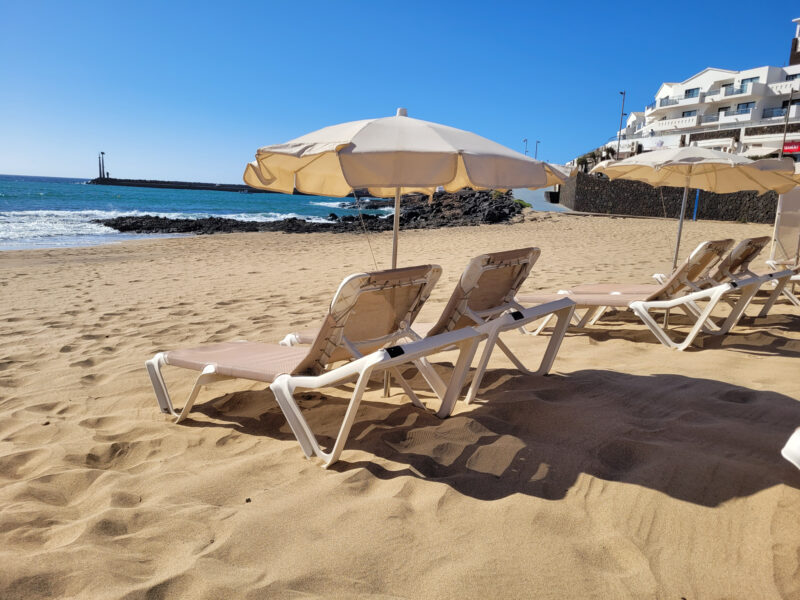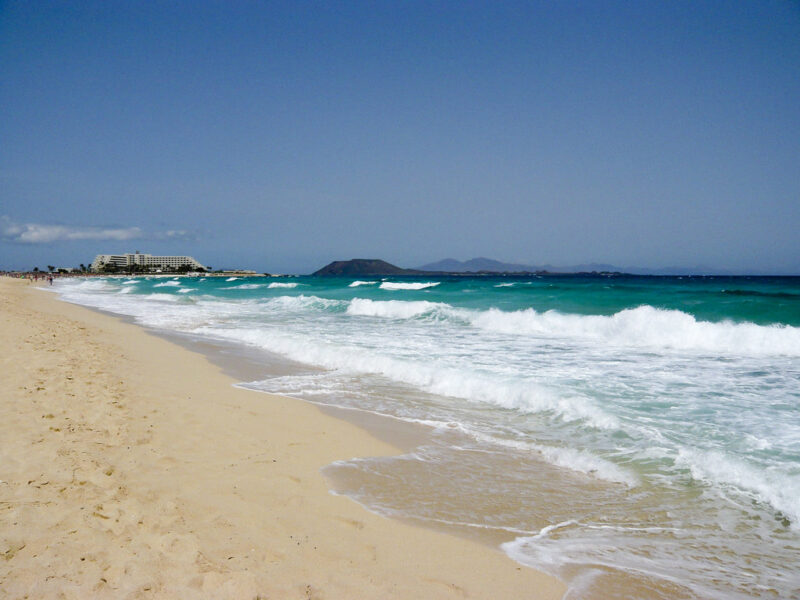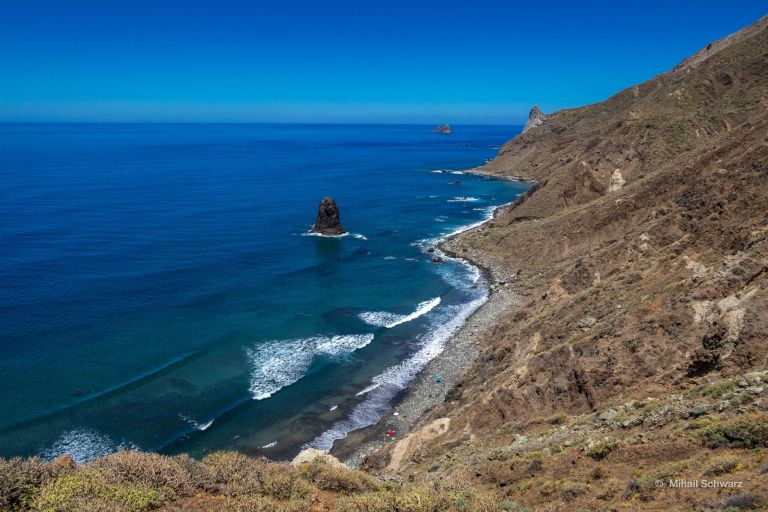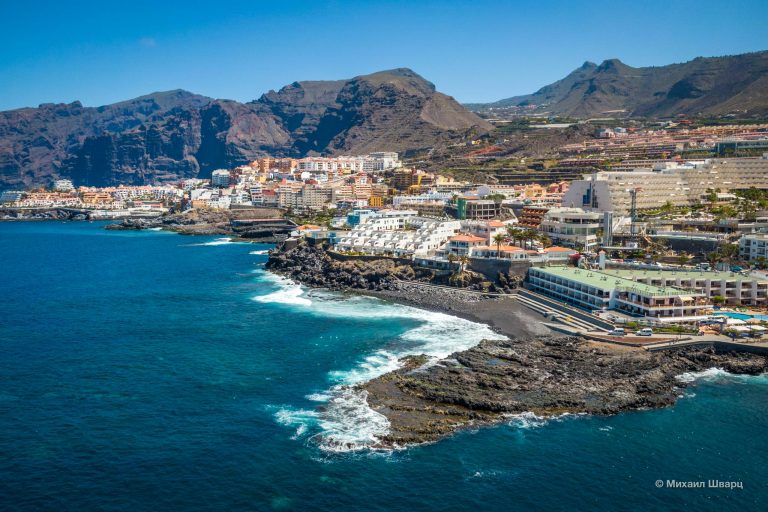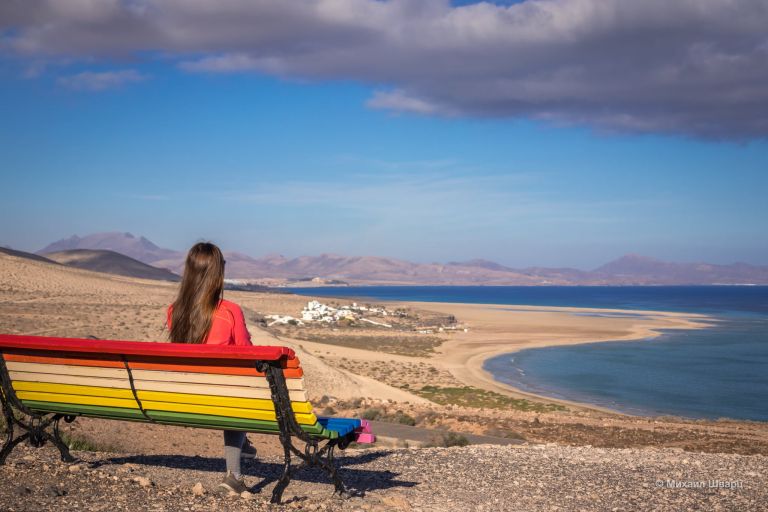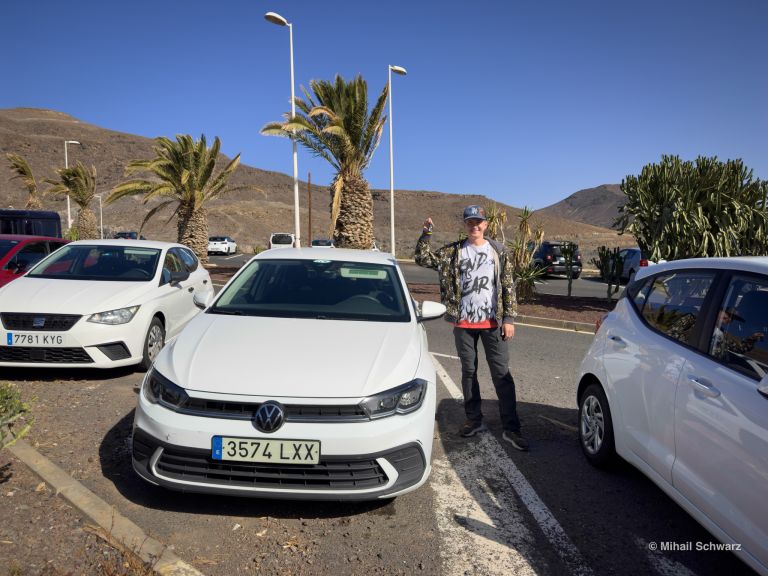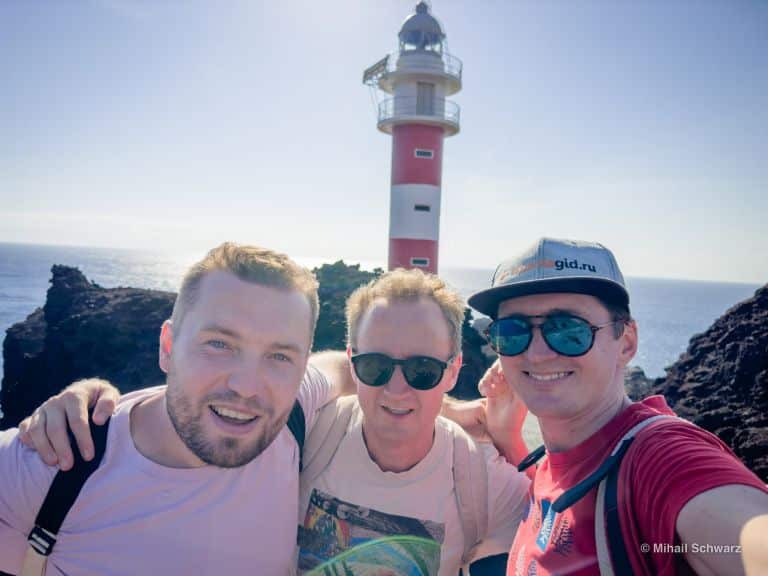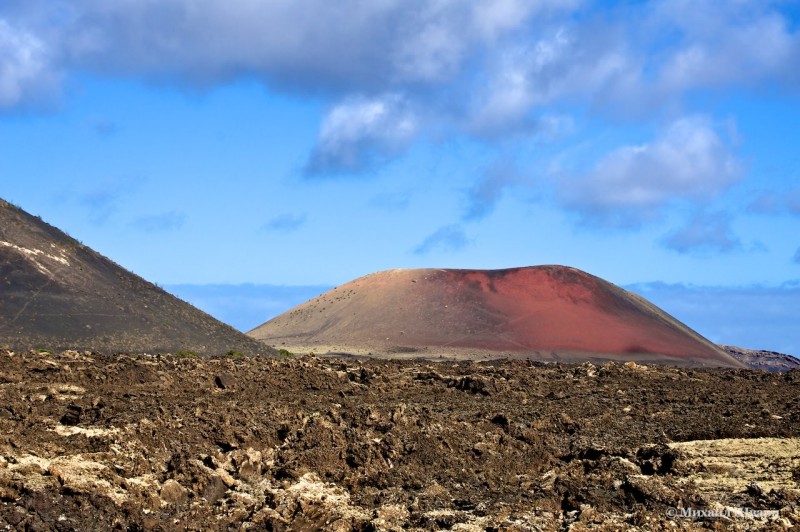
Located 125 km off the coast of Morocco and 2000 km from mainland Spain, Lanzarote is the fourth largest island of the Canary Archipelago. This island of volcanic origin is also called «the island of fire-breathing mountains» — there are three hundred volcanoes on its territory.
The local unusual picturesque landscapes that appear before travelers’ eyes are mesmerizing — there are truly «lunar landscapes» here. Most of the island is covered with solidified lava with colorful volcanic cones of different sizes rising between the lava fields.
Check out my other guides to the Canary Islands: Tenerife, Gran Canaria, La Palma, El Hierro, Fuerteventura, Lanzarote.
When to go to Lanzarote?

The best time to visit is September or October. But other months are very comfortable too. The average annual temperature ranges from +20°C in winter to +26°C in summer. Water temperature is 20-23°C, warmest in September and October.
Beaches of the island

Out of 250 km of coastline, beaches with white, black, and red sand occupy 30 km. They are all municipal and free. The best beaches with crystal clear water and white sand are in Papagayo Bay on the southern shore of the island. Windsurfers will enjoy Playa de Famara beach with its constant winds.
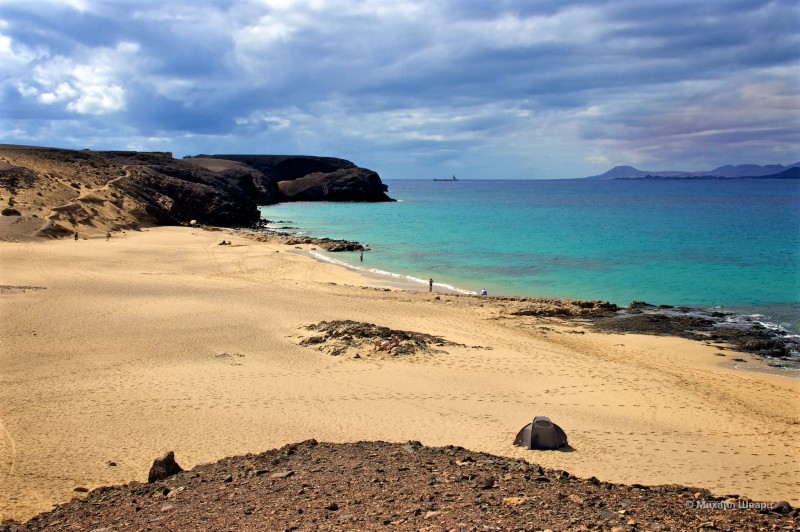
The sand bar Caleton Blanco on the northern coast is great for holidays with children. Nudists can sunbathe near the Playa Blanca resort on Playas de Papagayo beach.
Cities and resorts of Lanzarote island
Arrecife
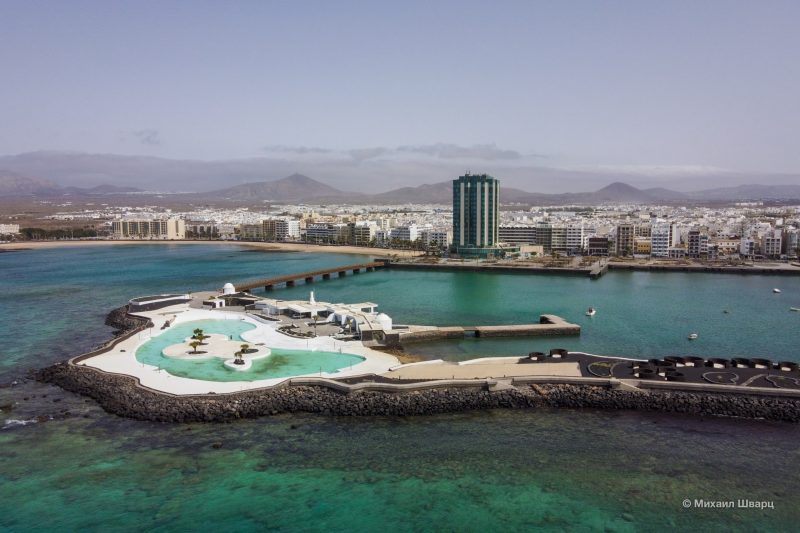
Arrecife is the capital of the island. The city is located in the eastern part of Lanzarote. It’s a commercial and passenger port where commercial vessels and cruise ships dock. The city grew on the site of a settlement founded in the 14th century by the Genoese merchant Malocello. Arrecife was long a refuge from storms for travelers and pirates.
The main historical sites of Lanzarote are located here — the old fortresses of San José and San Gabriel. There are several excellent beaches on the coast of Arrecife that have been awarded the EU «blue flag». In the city’s restaurants, you can taste dishes made from fresh fish caught by local fishermen and try wine from vines grown on volcanic lava.
Costa Teguise
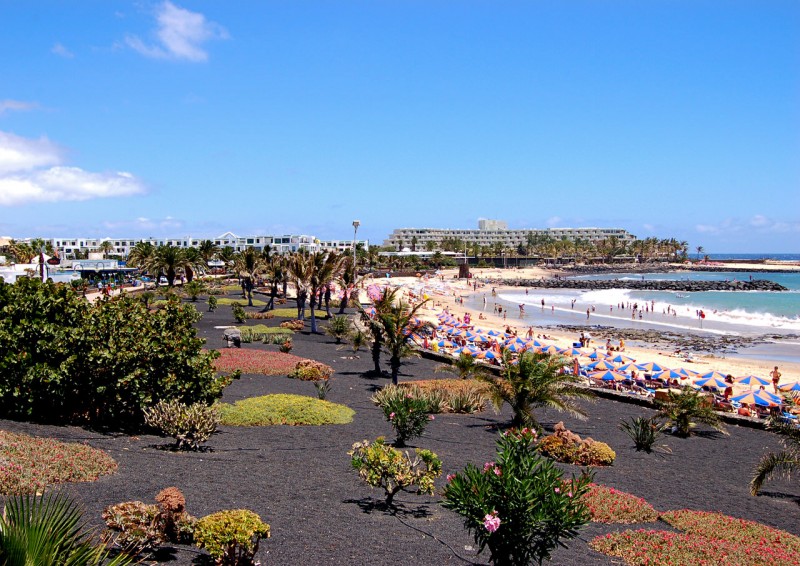
Costa Teguise is a cozy resort town located 10 kilometers from Arrecife. This resort was built specifically for tourists in the 1970s. César Manrique participated in the architectural project of Costa Teguise. His main creation is the town center — a stylized fishing village called Pueblo Marinero with restaurants, bars, and a traditional weekly market. One of the Spanish king’s residences is located in Costa Teguise. For entertainment, there are golf courses, tennis courts, water sports training centers, and a water park.
At the end of February, a wonderful carnival with processions in medieval costumes takes place here.
Puerto del Carmen
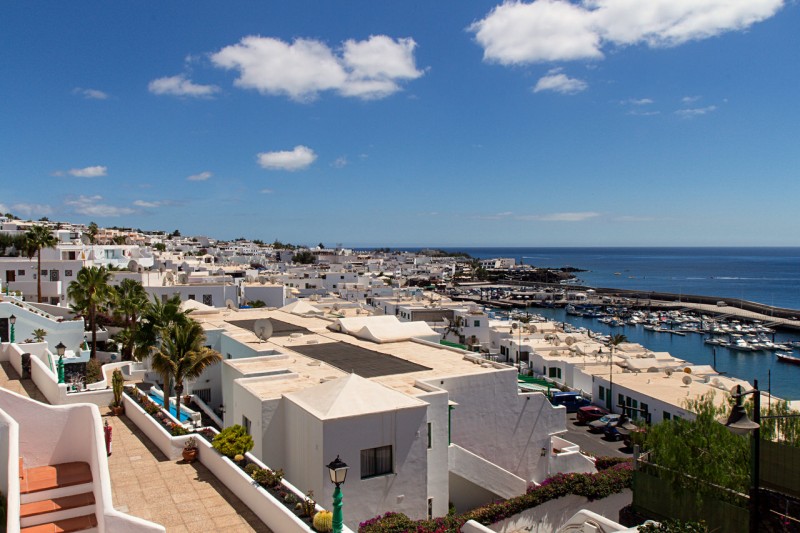
Puerto del Carmen is considered the tourist capital of Lanzarote. It stretches for seven kilometers along the southeastern coast of the island. On its main street, Avenida de las Playas, filled with restaurants, nightclubs, hotels, and shops, life bustles day and night. Around the harbor is the old town center with a labyrinth of streets. This area preserves the atmosphere of the small fishing village of La Tiñosa, from which the current resort originated. In the vicinity of Puerto del Carmen, you can visit the «Rancho Texas» Zoological Park.
At the end of July, the Fiesta del Carmen is held here — a vibrant festival dedicated to the heavenly patroness of the city.
Puerto Calero

Puerto Calero is a quiet and peaceful resort town. There are no crowded beaches here, nor the usual evening entertainment found at European resorts. This is an exclusive village built for respectable vacationers. Puerto Calero port serves as a mooring for private yachts, a starting point for sea excursions, and recreational dives on a yellow submarine. The Whale and Dolphin Museum (Museo de Cetáceos de Canarias) operates in the town.
Playa Blanca
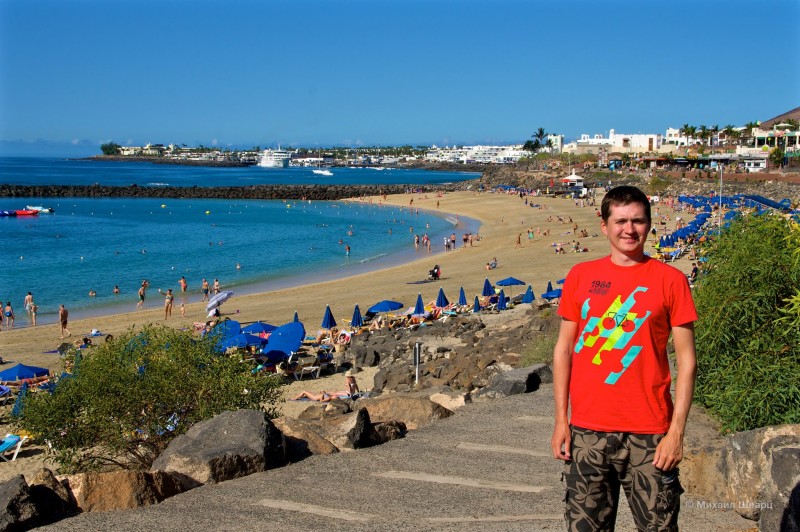
Playa Blanca is located on the southern shore of Lanzarote. It is the newest and most actively developing resort on the island. Playa Blanca is ideal for family vacations: its beaches are suitable for both young children and water sports enthusiasts. The well-developed infrastructure of the resort will appeal to vacationers of all ages. From the local port, you can take an excursion to the island of Fuerteventura.
Las Coloradas

Las Coloradas is a village located near Playa Blanca. A 400-meter strip of beach covered with volcanic sand stretches along the coast. Above the beach rises a monument of military architecture — the 18th century Castillo de las Coloradas fortress. Along the shore of Las Coloradas runs a beautiful romantic promenade with welcoming bars and restaurants. Within walking distance from Las Coloradas are the most beautiful wild beaches of Lanzarote — Playas de Papagayo.
La Santa Sport
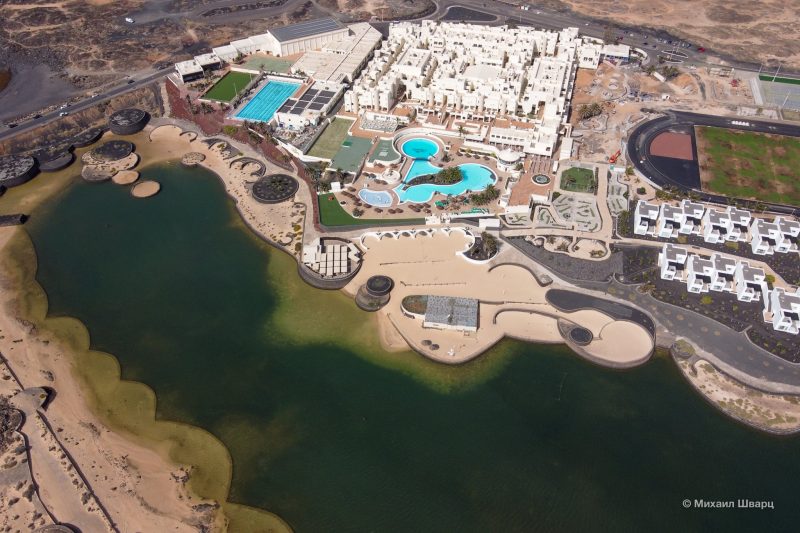
In the northwest of Lanzarote, near the picturesque La Santa lagoon, lies the sports resort — La Santa Sport. This place is a true paradise for active people. Regardless of age and abilities, everyone will find an activity to their liking here. The resort has created all the necessary conditions for numerous water sports, martial arts, and sports games (badminton, tennis, golf, basketball, volleyball, handball, football). In addition, there are facilities for fans of athletics, fitness, aerobics, Pilates, and yoga. Numerous routes for hiking and cycling are offered. And of course, La Santa Sport has all the necessary amenities of a resort area: shops, restaurants, bars, swimming pools, discos, beaches, and spa centers.
Attractions of Lanzarote
Timanfaya National Park
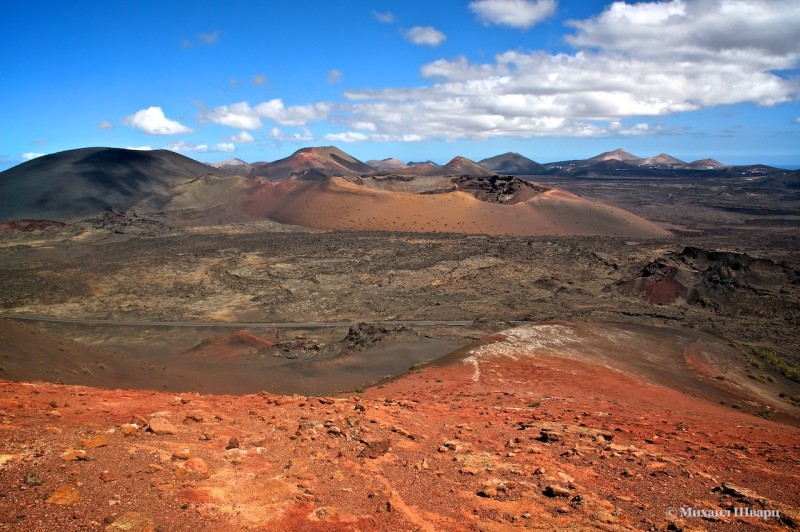
In the western part of the island lies the main attraction — Timanfaya National Park (Parque nacional de Timanfaya). Its unusual landscapes delight every visitor. A must-see on the program is a visit to the unique El Diablo restaurant, located at the top of an active volcano, where appetizing dishes are prepared on a volcanic grill. Read more…
Charco de los Clicos Lake
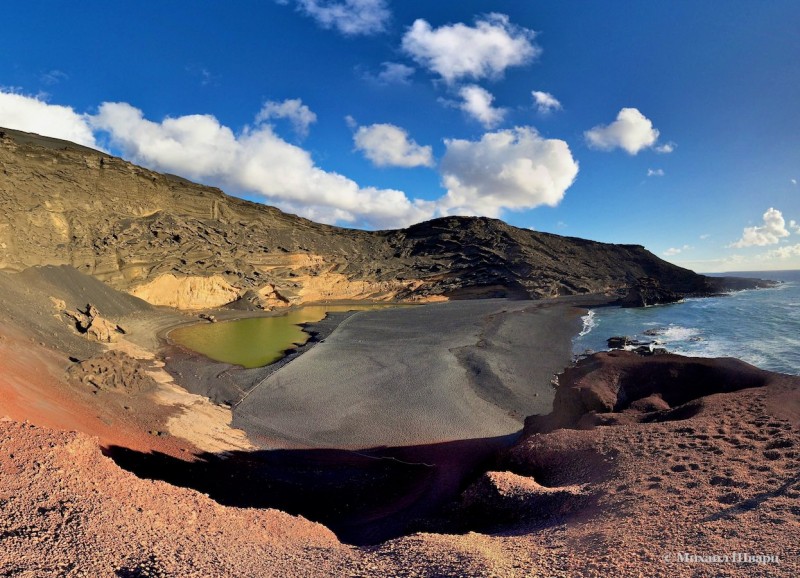
South of the village of El Golfo lies an amazing lake of an unnatural acid-green color — Charco de los Clicos. Surrounded by bizarre rocks that look like frozen waves. On the black pebble beach, you can find tourists engrossed in searching for the olive-green semi-precious stone — olivine (chrysolite). Read more…
Jameos del Agua Volcanic Caves

The Jameos del Agua volcanic cave complex presents an extraordinary landscape consisting of underground passages and grottoes. This complex became a tourist attraction thanks to the initiative of artist César Manrique. The first cave with a luxurious tropical garden and an artificial pond is called Jameo Grande. A little further is Jameos del Agua — a concert cave with unique acoustics and the entrance to a crater called Jameo de la Cazuela. The wildlife of Jameos del Agua is interesting, with its most famous representative being the white blind crab, which has become a symbol of this cave complex. Read more…
Cueva de Los Verdes

The Cueva de Los Verdes (Los Verdes Cave) is over 6 km long and was formed several thousand years ago. At one time, local residents used its intricate galleries to hide from pirates. Today, a one-kilometer section of the tunnel with winding corridors and spacious, high-ceilinged halls is open to tourists. Read more…
César Manrique House Museum

The amazing house of the famous artist, built and decorated by himself, is now the office of the César Manrique Foundation (Fundación César Manrique) and a museum of the renowned master. It houses the artist’s own works, as well as his personal collection of paintings by Tàpies, Miró, and Picasso. Read more…
Mirador del Río Viewpoint
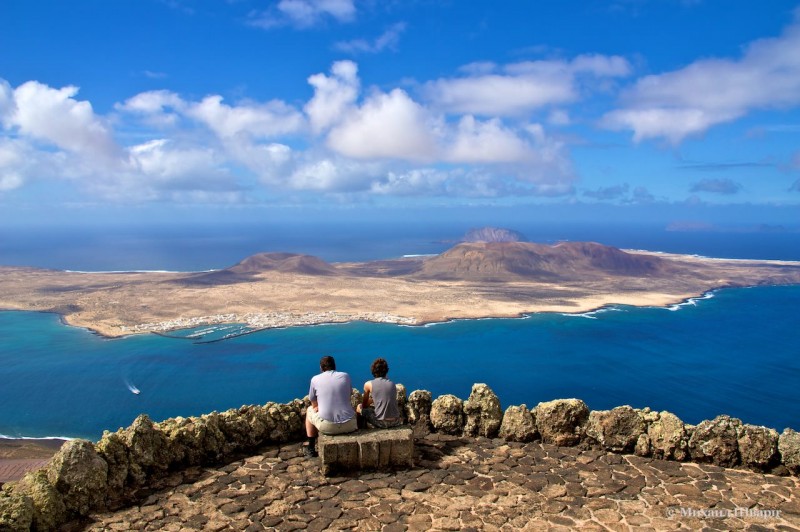
You can appreciate the beauty of the Chinijo Archipelago from the viewing point at Mirador del Rio cape — 470 meters above sea level. Read more…
La Geria Vineyards

La Geria is a famous wine-growing region, where vineyards are located even on the slopes of volcanoes. Today it’s a protected area, promoted on César Manrique’s initiative as an example of harmonious coexistence between humans and nature. The Malvasia grapes grown here are used to make an amazingly delicious and aromatic wine, which can be tasted and purchased in local wineries. Read more…
Cactus Garden
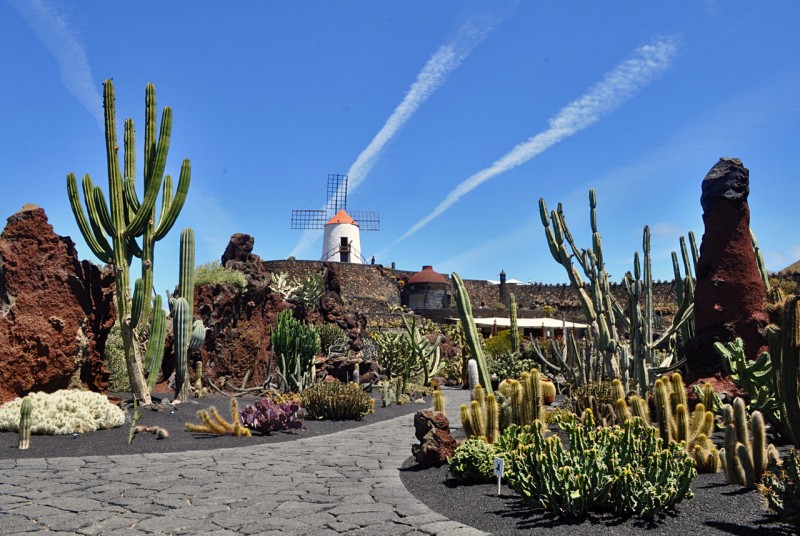
The Cactus Garden (Jardin de Cactus) is an extraordinary park, laid out like an amphitheater in a former volcanic ash quarry. It’s located in the village of Guatiza. Here grows a multitude of unique cacti species of various shapes and colors. Read more…
Rancho Texas Park
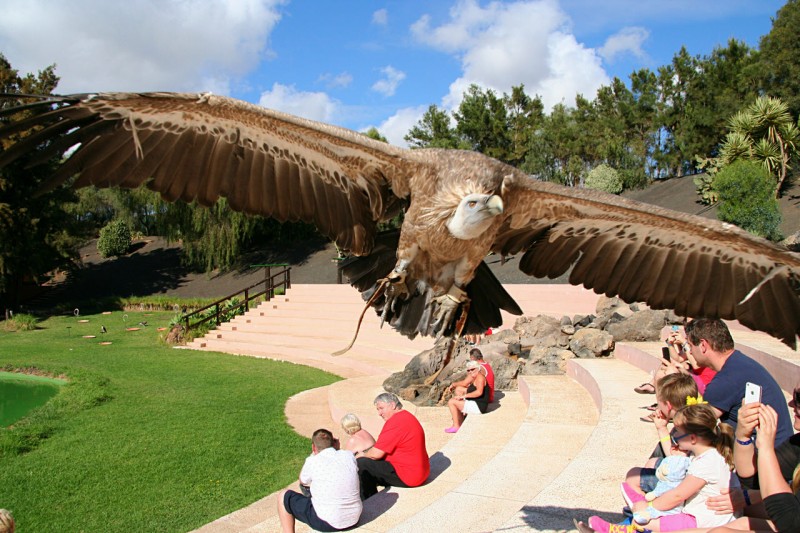
Rancho Texas Park is a zoo styled as the «Wild West», where you can see various representatives of the animal world kept in enclosures. The bird of prey show, featuring huge birds dramatically diving into a water basin, is of particular interest to visitors. Read more…
Costa Teguise Water Park
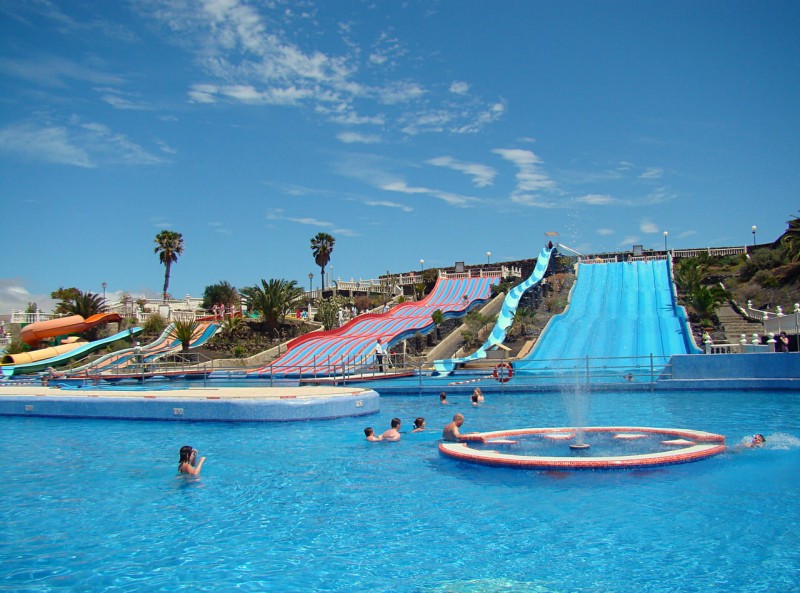
The water park (Aqua Park Costa Teguise) in the resort town of Costa Teguise is most popular with kids. Colorful trampolines, an inflatable «Game Castle», a «Children’s Lake» with slides of various shapes and colors, keep children entertained all day long. There are also water attractions for adults, such as the «Eight Tracks» ride. The water park also has souvenir shops, cafes, and a cozy restaurant on its premises. Read more…
Maps of Lanzarote
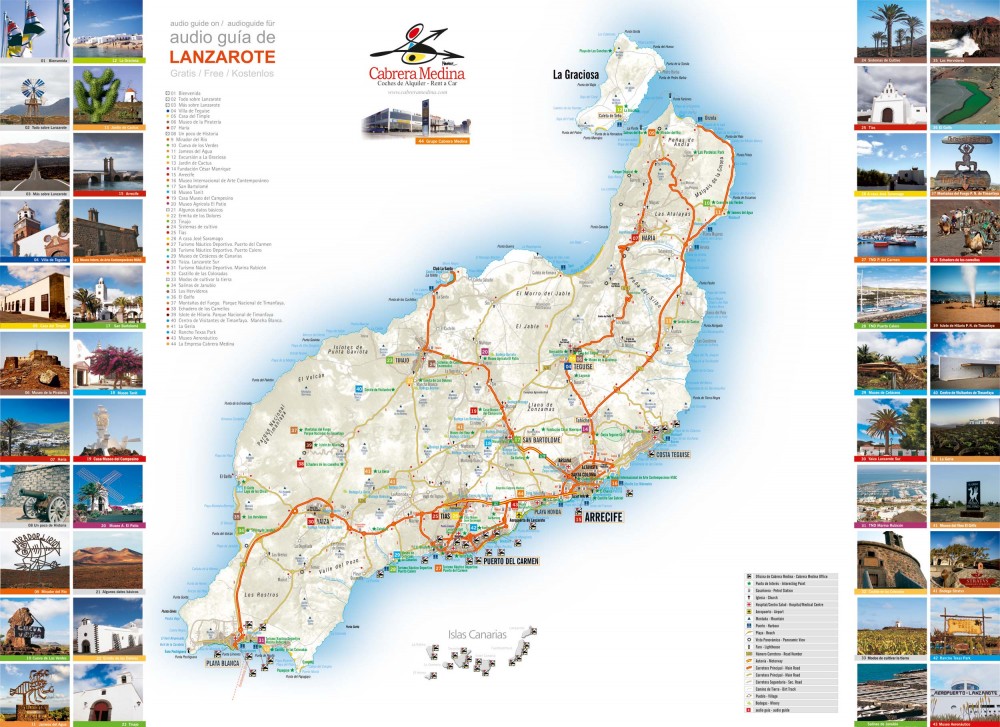
Interesting facts about Lanzarote:
Do you need to rent a car in Lanzarote?
Public transport on the island is poorly developed, and many beaches and attractions can only be reached by car. Therefore, I strongly recommend renting a car immediately after arrival.
After the pandemic, there is an acute shortage of rental cars, which has increased the price of car rental. Prices have become equal to those in Europe. There’s also a high probability that upon arrival, there will be no available cars for rent.
I recommend renting a car 1-2 months before your trip. During this period, prices are optimal, and the choice of car classes will be at its maximum.
Do you need an SUV in Lanzarote?
If you look at satellite images, it might seem that you won’t be able to drive anywhere without an SUV. In reality, you won’t even be allowed there. Tourists mostly have access to paved roads only. Therefore, even the smallest car will take you to any point on the island. I recommend a VW Polo class.
Where to rent a car in Lanzarote?
Avoid companies like Pluscar and Goldcar; despite attractive prices, I receive many negative reviews from readers. Choose a suitable car in size and price for rental using localrent from local rental agencies:
Pay attention to additional insurance. I advise taking full coverage without deductibles when ordering on the website. Here’s a small life hack: Get an additional WWI insurance policy for a year for car rentals from any company.
Read my report on how I rented a car in Lanzarote.
How to get to Lanzarote
There are many options, including direct flights from Tenerife, Barcelona, Alicante — more than 30 destinations. Check the list of direct flights and prices for six months ahead on this page. From Lanzarote Airport, located near the island’s capital Arrecife, buses run to all resort areas.


